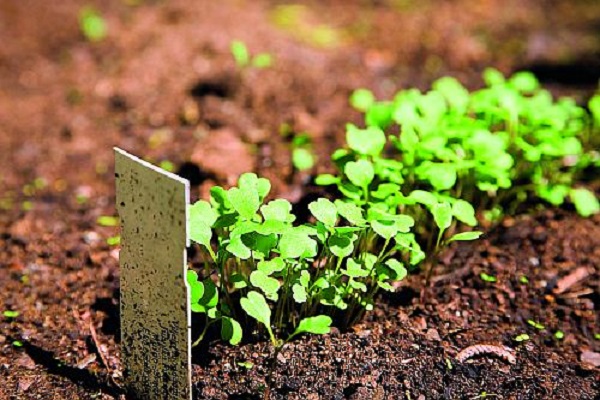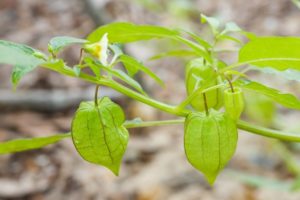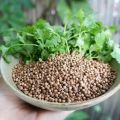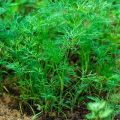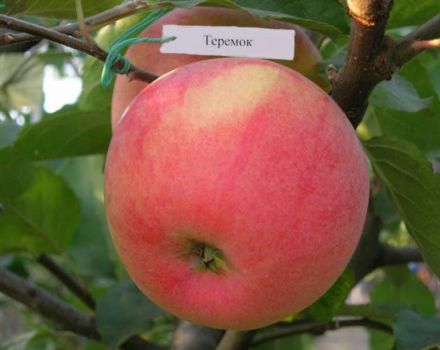The best species and varieties of perennial arugula for growing in open ground and greenhouses, especially planting and plant care
Perennial arugula is a favorite green of many gardeners, which has a large number of varieties. Due to its incredible taste, it is able to add mustard-nutty notes to the finished dish. Nutritionists advise including greens in your diet every day, as they are very beneficial. Bunches of fragrant crops can be bought at the market at the end of May or grown in the vegetable garden and windowsill.
Description and beneficial properties of arugula
The plant is a relative of mustard and cabbage. It has many other names that can often be found in food descriptions or articles about arugula. Rocket salad, arugula, caterpillar, inda, eruka, walker are one and the same thing. Greens are also called indau.

Lettuce leaves are rich in vitamins B and C, magnesium, zinc, iron, selenium and folic acid. Together, these components strengthen the human immune system by destroying harmful bacteria. Flavonoids in the composition make the walls of blood vessels strong and elastic. Arugula is an excellent medicine for those suffering from stomach ailments. Regular use prevents cancer cells from growing.
Rocket salad has the ability to calm the nervous system, therefore it is recommended for hot-tempered people. Greens lower cholesterol levels and remove excess fluid from the body. Lovers of diets do not bypass the nutty plant, as arugula helps to lose weight and maintain beauty. 100 g of the product contains only 25 calories.

Acting internally, it improves the appearance of hair and strengthens nails. Arugula is not only eaten, but also used to make masks and other care products. It is useful to include it in a face mask. It has a rejuvenating effect, making the skin elastic.
Arugula varieties
Among the existing varieties of arugula, annual and perennial are distinguished. They are designed for greenhouses and open ground. In order not to engage in salad planting every year, it is better to choose perennial varieties. The root system tolerates winter well, and the greenery appears in early spring.
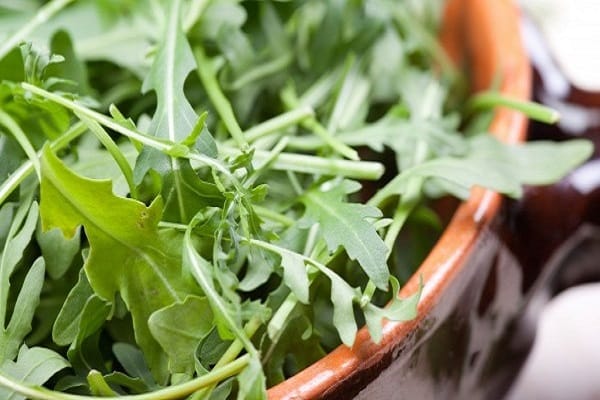
Breeders have developed many varieties of arugula. All that are on the market are suitable for gardeners living in the Moscow region. They have similar characteristics, but differ in taste and appearance. Among the large number of types of arugula, everyone can choose what they like.
Cupid's Arrow Variety
Included in the group of mid-season varieties.Suitable for consumption 4 weeks after the emergence of sprouts. The height of the culture rosette is 22 cm. The peculiarity of arugula is its late shooting and the preservation of a good presentation.
The leaves of Cupid's Arrows are wavy, with a rich green color. They are raised above the ground and form a uniform rosette. During the flowering period, yellow flowers appear on the plant. From 1 sq. m per season, up to 3 kg of greens are harvested.

Dikovina variety
In the descriptions of the Arrows of Cupid and Dikovin, you can find a lot in common. The bushes reach a height of 20 cm. The plant is covered with medium-sized leaves. The color is green, the surface is smooth, devoid of roughness.
The weight of one bush of Curiosity varies within 20 g. The blossoming arugula flowers are creamy and covered with brown veins. Indau forms the arrow late enough. The culture develops well on soils with high humidity. It continues to produce greens until the onset of cold weather, since it is able to maintain food quality for a long time.
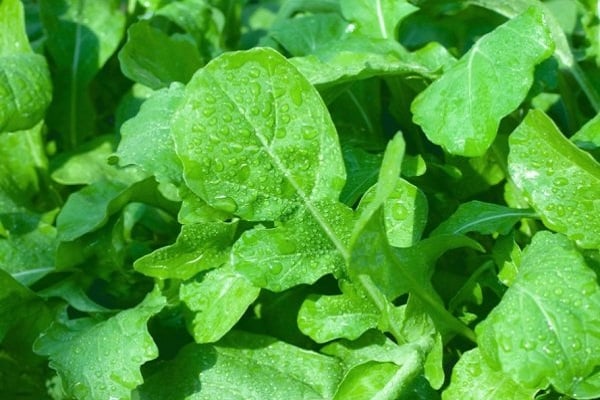
Olivette variety
It holds the record for the appearance of green leaves. It takes only 3 weeks from the moment the shoots appear to harvest. At the same time, the plant height is 25 cm. The leaves are heavily dissected and colored green.
At the time of eating arugula, a bitterness is felt. Fresh greens give off a spicy aroma. From the yellow flowers of Olivetta, small light brown seeds are formed, similar to poppy seeds. The yield is not very high - about 2 kg of greens are harvested from a small area.

Rocket variety
Another representative of early maturing varieties. The dark green leaves are wavy, and the plant itself is finely toothed. A delicate mustard aroma emanates from the leaves. After pruning, new ones appear on the bush, having the same bitter-sharp taste.
Rocket leaves are saturated with vitamin C. Suitable for growing in open and closed soil. Used to prepare various dishes. These can be simple appetizers or complex main courses.

Variety Victoria
It is recommended to prune greens 3 weeks after sprouting. The variety is considered versatile, since arugula can be planted in a greenhouse and sown in open ground. The height of the rosette is average - from 15 to 25 cm. The leaves cover the bush and are slightly raised above the soil.
The culture has a rich green color with light veins. When sliced into a dish, a strong aroma is felt. Due to its nut-mustard flavor, it goes well with vegetables, meat and cheeses. It is considered a dietary product. Arugula Victoria is a real source of vital minerals, vitamins and other equally useful substances.
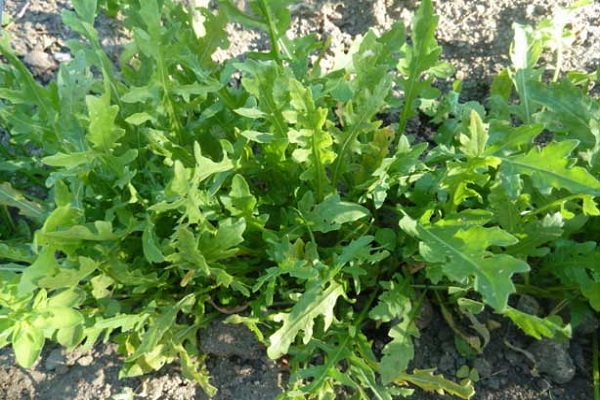
Variety Poker
It is very popular with greenery lovers. The early ripening variety is characterized by excellent taste. It forms the basis for salads and light dishes for fish and meat. The cultivation reaches its peak in mid-summer.
The variety of arugula Poker is not like other representatives of greenery, since the bush has a branched stem. Thanks to this feature, the plant reaches a height of up to 1 m. With the help of green leaves, a rosette is formed up to 25 cm high. The leaves are periodically cut for use, and new ones grow in their place.
In greenhouse conditions, the rosette is only 12 leaves. In open soil, the amount doubles. Arugula flowers have a pale cream shade. The yield is not very large, despite the fact that the variety is considered early.

Variety Solitaire
It was bred by breeders back in 2007. Since then, he has taken an honorable place on the land plots of many gardeners. It tolerates winter well outdoors, giving green shoots in early spring. It takes 20 to 30 days to ripen.
The neat green leaves of Solitaire have incisions along the edges.At the end of the growing season, the plant forms flowers of a delicate yellow color. The aroma of greens is very strong, the taste has mustard and nutty notes. Arugula is suitable for conveyor cultivation.

Spartak variety
Arugula is packed with vitamins and essential oils. The complex of vitamins B and C increases hemoglobin and helps to reduce salt deposits. Tolerates extreme cold, and this does not affect the culture in any way. Gives green mass early, so it is possible to prepare meals from fresh herbs. The height of the bush is not very large - only 18-23 cm.
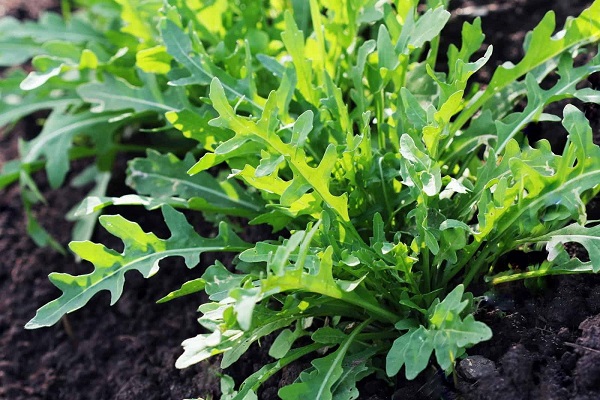
How to grow arugula
Lettuce can be grown in two ways - in greenhouses and in the open field.
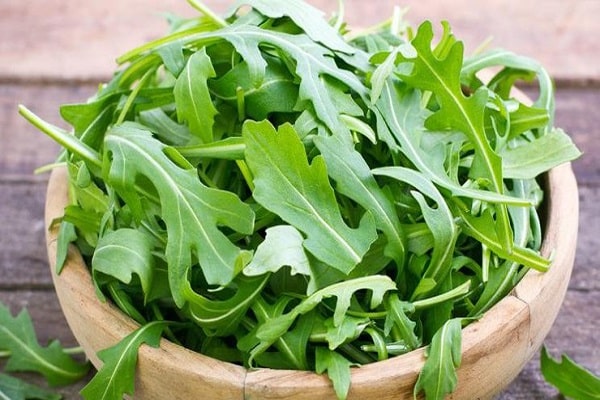
In greenhouse conditions
Since the land is protected, this will ensure the arugula crop for a whole year. An important condition for a greenhouse is temperature. The pointer should not drop below 16 degrees. If sunny days are far behind, lettuce needs artificial lighting with special lamps.
Soil preparation before sowing:
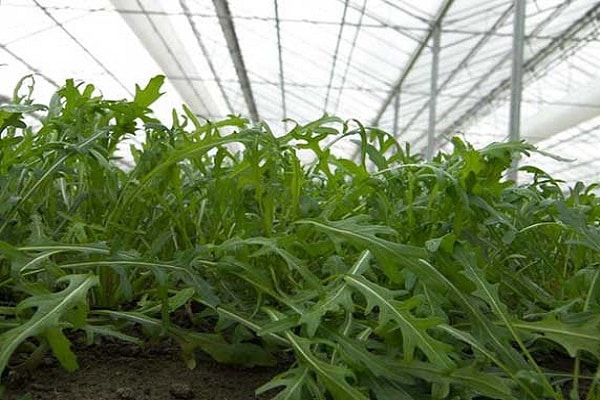
- To do the loosening procedure to a depth of 20 cm.
- Clean the beds of weeds and residues of other crops.
- Plow after 12 days. Thus, it will be possible to destroy the weeds that have got into the deeper layers of the soil.
- Carry out harrowing. This allows moisture to remain in the ground for a long time.
At first glance, it may seem that the pre-sowing stages are difficult, but this is not so. If you follow the directions, the person will succeed. As a result, seedlings will appear, and over time, an adult culture.

Open soil
Many gardeners and summer residents practice this particular method of growing crops. Lettuce seeds are sown from mid-spring to late August. The procedure is repeated every 10 days to always have fresh herbs. If the summer days are very hot, choose an area that is in the shade. Arugula does not tolerate direct sunlight.
The procedure for sowing seeds in open ground is the same as in greenhouse conditions. It is recommended to follow these rules:
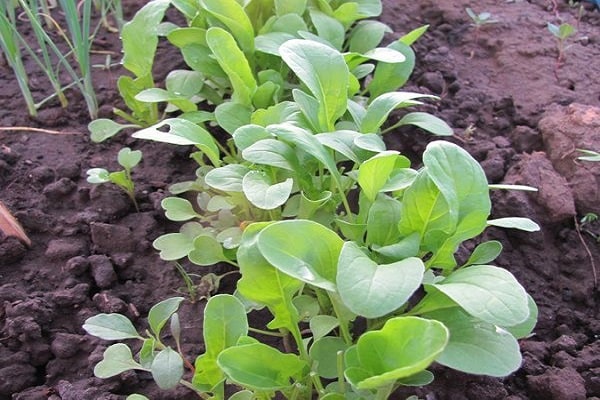
- the distance between the rows should be within 45 cm;
- deepen the seed into the soil by no more than 1.5 cm;
- there should be at least 5 cm of free space around the plant.
Planting density negatively affects the growth of each bush. Excess shoots are removed when they have 2 leaves.
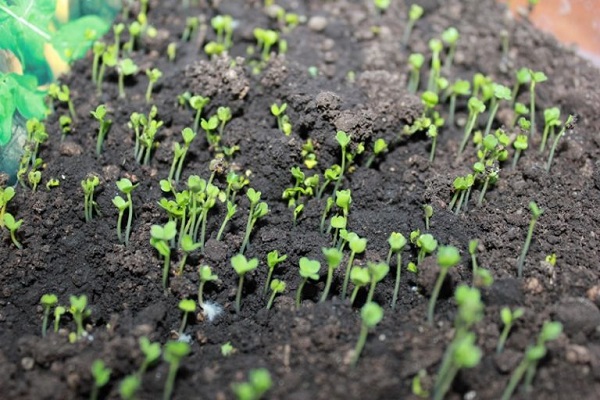
Getting seedlings
Seedling is also possible. To do this, take separate cups or a large pot. In the latter case, 30 are sown. 2-3 seeds should be planted in each cup in order to select the strongest sprout and transplant into open soil.
Seedlings appear very quickly. When the seedlings are strong enough, they are transferred to a permanent place in open ground along with an earthen lump. For normal development, a temperature regime of 9 degrees is sufficient. To protect young seedlings from the cold, the sprouts are covered with jars and removed in the morning.

Growing on a windowsill
An excellent alternative for citizens who do not have land plots. If there is a balcony, this is only a plus, since the pots with herbs can be taken out into the fresh air. It is recommended not to plant many sprouts in one box. It is best to choose just one container for each bush. A special requirement that a person must comply with when growing arugula on the windowsill, encloses in a box - its depth should not exceed 10 cm.
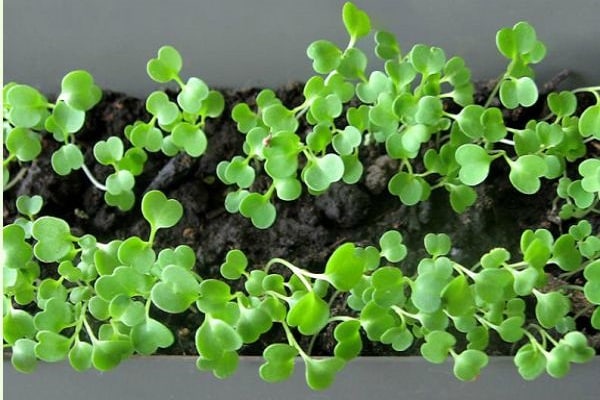
Rules for caring for arugula planting
Eruka leaves begin to break off when they reach 10 cm in length. This contributes to the renewal of the culture, due to which new leaves appear. If the greens overgrow, it will affect their appearance and taste.
Juicy leaves lose their attractiveness, become tough with a lot of fibers. They are already unusable for food.
New leaves will appear if the crop is constantly watered.She especially needs abundant watering on hot days. Not every gardener adheres to this rule. The lack of moisture changes the taste of the arugula as it becomes very bitter.
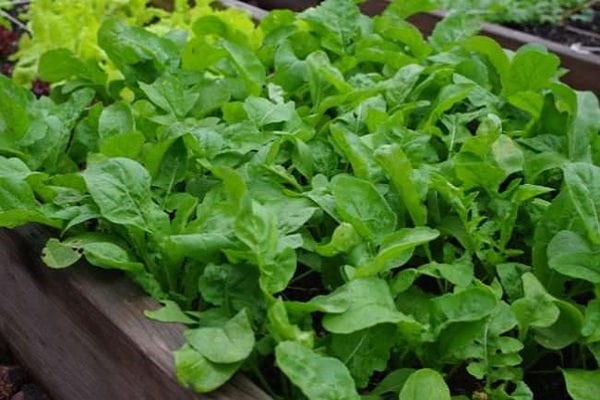
When watering, do not pour water directly onto the plant. It must be sprayed so that the soil absorbs water evenly. For this purpose, use a watering can. When it comes to large plots of arugula, sprinklers come in handy.
A hose is laid between the beds with lettuce and the soil is moistened as necessary. As a rule, this is done in the morning and evening, after the heat has subsided. In addition to watering, the land needs plowing. This promotes better penetration of air masses and moisture to the roots of the plant.
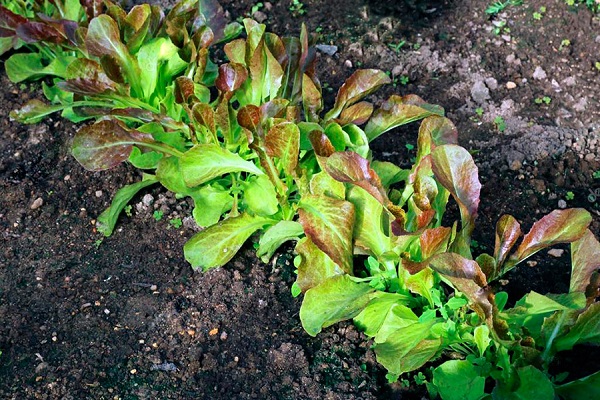
Fertilization
As for feeding, it is carried out twice a season. Fertilization occurs simultaneously with watering the plants. Substances for feeding are selected based on the ripening period of the greenery. Since it is released for a long time, manure and other mineral fertilizers are not used. Otherwise, the green mass will accumulate a large amount of toxic substances.
It is best to use nitrogen-based fertilizers. Chicken or cow dung is perfect for this. It is necessary to breed, observing the proportions. For 25 g of the substance, take at least 10 liters of water.

The salad plant has many names - arugula, indau, eruka and others. It has been known in many countries for many centuries. It is appreciated not only for its taste, but also for its useful properties, the ability to use it in medicine and cosmetology. Growing will not take much time, and besides, it can be done on the windowsill. If the gardener tries arugula at least once, he will no longer be able to refuse it.
